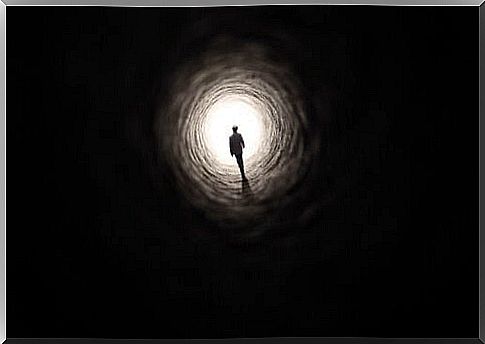The Man In The Sand And The Concept Of The Ominous In Psychoanalysis

The Sandman is a short story written by Ernest TA Hoffman. Sigmund Freud took it as a point of reference for the construction of the concept of the ominous, or the sinister, in psychoanalysis. Likewise, Jacques Lacan refers to the story in his seminar La angustia . The story is part of the work Night Tales and falls within the genre of Gothic horror literature.
Psychoanalysis assumes that the ominous or sinister is a variant of anguish. A “disturbing strangeness” by which the known becomes rare, or the rare becomes known, or both realities at the same time.
The concept of the ominous explains why human beings come to feel terror of something that does not exist, or of something that we do not know. An example of this is the famous “coconut” or “cuckoo”, a being that appears in many cultures, although it does not even have a physical representation. Many people reach adulthood fearing the dark, as a result of those childhood stories of the “bogeyman” or “cuckoo.” What are they really afraid of? Whatever it is, it is not outside, but within themselves.
The story of the man in the sand
The tale of The Man in the Sand begins with Nathaniel’s childhood memories. As a child, before going to sleep, his mother told him that it was time to go to bed, otherwise the sandman would come and throw sand in his eyes to close them. The same mother told her that it was a fantasy, but a maid pointed out that it was a true story.
According to this maid, this monstrous being was very bad. He stalked children who did not want to go to sleep. He threw handfuls of sand into their eyes , until they bled and came out of their sockets. Then the man in the sand would put those eyes in a sack and take them to the moon to serve as food for his children.

Nathaniel associates the Sandman with a friend of his father’s. The latter dies and the boy thinks that the culprit is that horrible being. Years later, he thinks he is meeting that figure again, through a barometer salesman. Later he falls in love with Olympia, who is an automaton, an inanimate being that he mistakes for a woman.
All this plunges him into a spiral of madness and leads him to a madhouse. Then, apparently, he improves, but at one point he thinks he will see the man from the sand again and this causes him to launch himself from a great height, killing himself.
Freud’s analysis
Based on the story of The Man in the Sand , Freud gives form to the concept of the ominous, or the sinister. It begins by doing a linguistic and etymological analysis of this concept. In this way, he first concludes that it is the extreme opposite to the intimate and familiar. However, when he delves deeper, he also realizes that the word refers to the hidden or clandestine and to the word “house”.
Through this analysis he arrives at the meaning that Schelling gives to the ominous. That is: what, being destined to remain hidden, has come to light. Then the ambiguity of the sinister appears: it is familiar (of the house) and at the same time it is something hidden. Likewise, this sinister is one of the forms that anguish takes.

Freud finds that in the ominous there operates a mechanism by which something familiar becomes strange. This is what happens when someone dies: before it was someone close and now it is a corpse that is in an incomprehensible state. From there the sinister demons and spirits of the “beyond” would be born.
In The Man in the Sand the protagonist is afraid of losing his eyes. Freud associates this fear with mutilation related to the castration complex. He also finds a clear coincidence between the concept of repression and the theme of the sinister. The latter would be the return of the repressed, the repressed that comes to light. He then concludes that the ominous is what leads to the anguish of the infantile castration complex.









